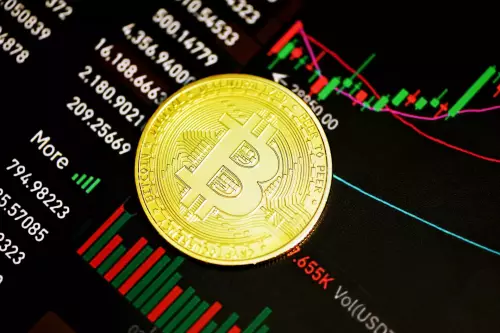 |
|
 |
|
 |
|
 |
|
 |
|
 |
|
 |
|
 |
|
 |
|
 |
|
 |
|
 |
|
 |
|
 |
|
 |
|
Cryptocurrency News Articles
Top 6 DeFi Protocols Leading the Decentralized Finance Revolution
May 28, 2024 at 06:46 pm
Decentralized Finance (DeFi) is revolutionizing the financial sector by offering a decentralized alternative to traditional banking and financial services. DeFi removes intermediaries, enhances transparency, and delivers innovative financial products by leveraging blockchain technology.

Decentralized Finance (DeFi) has emerged as a revolutionary force in the financial sector, offering a decentralized alternative to traditional banking and financial services. By leveraging blockchain technology, DeFi aims to disintermediate finance, enhance transparency, and introduce innovative financial products.
In this article, we'll explore the top 6 DeFi protocols that are leading the charge, not only offering novel functionalities but also promising enhanced transparency and security. Get ready to delve into the world of autonomous financial systems that empower users like never before.
Understanding DeFi
DeFi refers to a suite of financial services built on blockchain technology, primarily on Ethereum. These services include lending, borrowing, trading, and investing, all conducted without intermediaries like banks. Key principles of DeFi include decentralization, transparency, and accessibility.
Traditional finance (CeFi) relies on centralized institutions to manage and execute financial transactions. In contrast, DeFi operates on decentralized networks, allowing peer-to-peer transactions and self-custody of assets. This eliminates the need for trust in intermediaries and reduces costs.
DeFi offers numerous benefits such as increased access to financial services, lower costs, enhanced security through cryptographic protocols, and innovation in financial products. However, it also faces challenges including regulatory uncertainty, security vulnerabilities, and the complexity of use.
Understanding the leading DeFi protocols becomes more effective when traders use tools like GPT Definity Ai to connect with educational experts.
6 Leading DeFi Protocols
DeFi protocols are the building blocks of the DeFi ecosystem, providing the infrastructure for various financial services. These DeFi protocols leverage smart contracts to automate transactions and ensure transparency. The leading protocols in DeFi have distinguished themselves through innovation, user adoption, and security.
Leading protocols are determined based on their total value locked (TVL), user base, transaction volume, and unique features. Let’s delve into some of the most prominent DeFi protocols.
1. Uniswap
Uniswap, founded in 2018 by Hayden Adams, is a decentralized exchange (DEX) protocol. It allows users to trade Ethereum-based tokens directly from their wallets without relying on an intermediary.
Uniswap uses an automated market maker (AMM) model, where users provide liquidity to pools in exchange for a share of the trading fees. This model replaces traditional order books with liquidity pools, facilitating seamless token swaps.
Key Features and Advantages
Uniswap is widely used for trading Ethereum-based tokens, liquidity mining, and decentralized financial applications. Its ease of use and accessibility have made it a popular choice among DeFi enthusiasts.
2. Aave
Aave, initially launched as ETHLend in 2017, is a decentralized lending protocol. It allows users to lend and borrow various cryptocurrencies in a trustless manner.
Aave users deposit their assets into liquidity pools to earn interest. Borrowers can then take out loans from these pools by providing collateral. The protocol uses over-collateralization to secure loans.
Key Features and Advantages
Aave is used for earning interest on idle assets, borrowing against crypto holdings, and leveraging flash loans for arbitrage and other advanced trading strategies.
3. Compound
Compound, founded in 2018, is a decentralized money market protocol. It enables users to lend and borrow cryptocurrencies without the need for intermediaries.
Users supply assets to liquidity pools and earn interest based on the demand for borrowing. Borrowers provide collateral to secure loans. Interest rates are algorithmically adjusted based on supply and demand.
Key Features and Advantages
Compound is utilized for earning passive income on crypto holdings, borrowing funds for trading or other uses, and participating in governance decisions through COMP tokens.
4. MakerDAO
MakerDAO, founded in 2015, is a decentralized credit platform. It enables the creation of DAI, a stablecoin pegged to the US dollar, through collateralized debt positions (CDPs).
Users lock up collateral (typically Ethereum) in smart contracts to generate DAI. If the value of the collateral falls below a certain threshold, the position is liquidated to maintain the peg.
Key Features and Advantages
MakerDAO is widely used for generating stablecoins, hedging against volatility, and accessing liquidity without selling crypto assets.
5. Synthetix
Synthetix, launched in 2018, is a decentralized protocol for creating and trading synthetic assets. These assets can represent real-world assets like commodities, fiat currencies, and stocks.
Users mint synthetic assets (Synths) by locking up SNX tokens as collateral. Synths track the value of real-world assets and can be traded on the Synthetix Exchange.
Key Features and Advantages
Synthetix is used for trading synthetic assets, gaining exposure to real-world assets without owning them, and earning staking rewards.
6. Curve Finance
Curve Finance, launched in 2020, is a decentralized exchange optimized for stablecoin trading. It offers low slippage and low fees for trading stablecoins and similar assets.
Curve uses an automated market maker (AMM) model tailored for stablecoin pools
Disclaimer:info@kdj.com
The information provided is not trading advice. kdj.com does not assume any responsibility for any investments made based on the information provided in this article. Cryptocurrencies are highly volatile and it is highly recommended that you invest with caution after thorough research!
If you believe that the content used on this website infringes your copyright, please contact us immediately (info@kdj.com) and we will delete it promptly.






























































